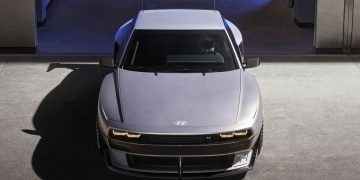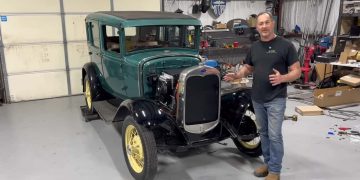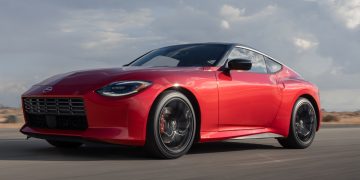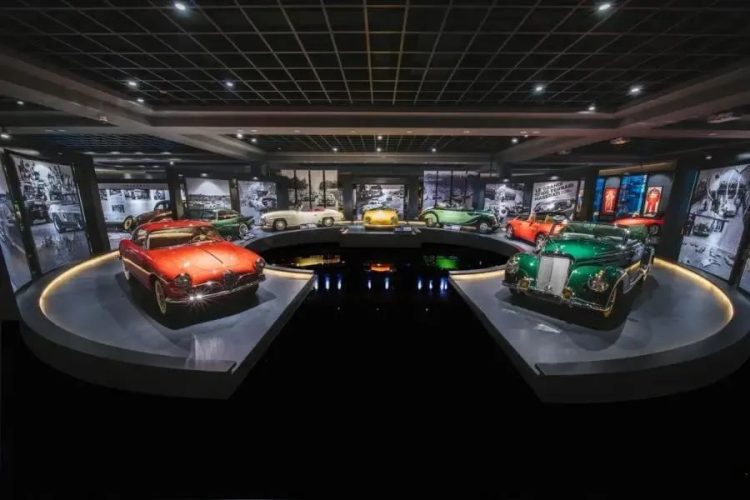Street car culture has always been synonymous with rebellion, freedom, and the pursuit of automotive excellence. Whether you’re in the heart of a bustling city or cruising along open highways, street cars—especially those modified by enthusiasts—have become a staple in the automotive world. From their humble beginnings in the underground car culture to dominating the racetracks, street cars have played a vital role in shaping both automotive innovation and driving passion.
This article explores how the culture surrounding street cars has sparked innovation, influenced the development of consumer vehicles, and created a global community united by their shared love for automotive performance. In addition, we will look at the symbiotic relationship between street car culture and motorsports, examining how ideas and trends developed in the streets have influenced performance on the racetrack.
The Evolution of Street Car Culture
Street car culture, at its core, is all about personalizing and enhancing vehicles to express individual style, boost performance, and most importantly—create a bond between car and driver. Its roots can be traced back to the post-World War II era when returning soldiers, who had developed a keen interest in mechanical tinkering during their military service, began modifying their civilian vehicles. Over time, this culture flourished into a massive movement that transcended national borders, reaching every corner of the globe.
- The Birth of Customization: The concept of customizing street cars became more prevalent in the 1960s and 1970s, particularly in America. With the emergence of hot rod and muscle car cultures, street car enthusiasts began to experiment with tuning and performance modifications. The notion of making a car faster, more agile, and visually distinct from others was born. Popular modifications at the time included engine swaps, performance exhaust systems, suspension upgrades, and custom paint jobs.
- The Influence of Japanese Street Car Culture: During the 1980s and 1990s, Japanese street car culture introduced a new wave of performance and aesthetic trends. The rise of turbocharged engines, lightweight chassis, and advanced suspension systems, seen in iconic cars like the Nissan Skyline GT-R, Toyota Supra, and Honda Civic, brought an era of precision engineering to the streets. This was also the time when the import tuning scene gained significant popularity in the United States, inspiring a new generation of enthusiasts.
- The Globalization of Street Car Culture: In the 1990s and early 2000s, street car culture became a global phenomenon. With the advent of social media, tuning communities began to share their passion for cars, exchanging knowledge, tips, and techniques. Street car culture, once confined to local scenes, became a worldwide movement, with enthusiasts from all over the globe building and showcasing their modified cars. From street racing to custom car shows, the street car scene continued to expand its influence, ultimately intersecting with the world of motorsports.
The Influence of Street Cars on Automotive Innovation
One of the most significant aspects of street car culture is its profound impact on the automotive industry. While street cars were once thought of as simply modified consumer vehicles, they now serve as testing grounds for innovations that eventually make their way into mainstream production cars. Let’s explore some of the key ways in which street car culture has contributed to automotive advancement.
- Performance Modifications: Street car enthusiasts have long sought ways to enhance the performance of their vehicles. This desire for greater speed, agility, and handling has pushed manufacturers to adopt new technologies and engineering solutions. Turbocharging, forced induction systems, advanced suspension setups, and lightweight materials like carbon fiber are just a few examples of innovations first tested in the street car scene before being integrated into commercial vehicles. Manufacturers began to notice that street car enthusiasts were heavily modifying their cars to extract more power and performance, and in response, they began developing factory-backed performance models such as the Ford Mustang GT350, the Subaru WRX STI, and the Volkswagen Golf R. These vehicles were influenced by the modifications that street car enthusiasts were performing on their vehicles, and they became factory-built versions of the high-performance street cars that enthusiasts had long dreamed of.
- Technological Advancements: The focus on maximizing vehicle performance has led to the development of several technologies that are now commonplace in modern cars. Innovations such as advanced electronic control systems (ECUs), turbocharging, and fuel injection systems were initially developed by street car tuners and modified car shops. Over time, car manufacturers adopted these technologies for production vehicles, making high-performance features more widely available.
- Aerodynamics and Design: While many street car enthusiasts focus on the mechanical aspects of their vehicles, others concentrate on the aesthetic and functional aspects of their rides. Aerodynamics is an important consideration for street car builders who seek to optimize their car’s performance. Modified body kits, spoilers, and diffusers first seen on street cars have made their way into high-performance road cars and race cars alike. Many manufacturers now incorporate these elements into their vehicles to improve downforce, stability, and handling at high speeds.
- Customization and Aftermarket Industry: The growing demand for customization has led to a thriving aftermarket industry. From performance parts to custom body kits, wheels, and interior enhancements, the street car scene has driven demand for a wide variety of aftermarket products. In turn, this has created jobs, fueled innovation, and allowed for the continued development of unique automotive solutions that cater to individual tastes.
The Relationship Between Street Cars and Motorsports
Motorsports and street car culture share a symbiotic relationship that benefits both worlds. While the roots of street car culture were grounded in everyday driving and personal modification, the desire to push the limits of speed and performance led many car enthusiasts to seek out organized motorsports like drag racing, drifting, and track racing. Likewise, motorsports played a critical role in shaping the street car market by providing insight into the cutting-edge technologies that would later influence consumer vehicles.
- Drag Racing: Street racing, which originated in the streets, evolved into professional drag racing, where enthusiasts could showcase their cars in a legal and competitive environment. The skills honed in street racing—such as tuning a car for maximum performance and learning how to handle high-speed situations—were directly translated into competitive drag racing. In the past, street car owners would modify their engines to gain advantages in races, and this practice led to the development of specialized drag racing cars. As street racing grew in popularity, companies like Mopar and Ford began to build performance vehicles designed specifically for drag racing, incorporating lessons learned from the streets.
- Drifting: Drifting, a driving technique where the driver intentionally oversteers to cause a loss of traction while maintaining control, became popularized in the streets of Japan before it gained global attention as a motorsport. Japanese street racers often practiced drifting on mountain roads, pushing their vehicles to the limit. This led to the creation of specialized drift cars that prioritized handling, precision, and control over sheer speed. Over time, drifting transitioned from the streets to professional motorsports, with global competitions like Formula Drift showcasing the talents of skilled drivers. Today, many car manufacturers produce vehicles designed specifically for drifting, including rear-wheel-drive models with a focus on suspension tuning, steering, and power delivery.
- Circuit Racing and Track Days: Street car enthusiasts have always been keen on testing their vehicles’ performance in real-world driving environments. This passion for pushing limits often leads them to participate in track days, where they take their modified street cars to a professional racetrack to compete with other enthusiasts. Track days serve as a platform for street car owners to evaluate how their cars handle high-speed cornering, braking, and acceleration in a controlled environment. As a result, many performance-focused cars, such as the Porsche 911, BMW M3, and Nissan GT-R, were born out of the need for a car that could thrive on both the streets and the racetrack. Manufacturers recognize the importance of offering vehicles that can be used for both street driving and track performance, and innovations inspired by street car culture often filter into the design of these models.

Street Cars and Driving Passion
Ultimately, the connection between street cars and driving passion is one of the most exciting aspects of the car culture. Street car enthusiasts are driven by their love for speed, performance, and the feeling of being connected to the road. Customizing a car to reflect one’s personal style and performance preferences creates a deep emotional bond between driver and vehicle.
Street car culture encourages experimentation and allows individuals to take ownership of their driving experiences, whether it’s through visual modifications or technical enhancements. For many, the excitement of driving a customized car is not only about the performance but about expressing individuality and creativity through a machine.
The Future of Street Car Culture
As the automotive world moves toward electric vehicles, autonomous technology, and sustainability, many wonder how street car culture will evolve. Will electric performance cars replace traditional gasoline-powered street cars? Will autonomous driving reduce the role of human skill in racing and street driving? While these questions remain unanswered, one thing is certain: street car culture has a legacy that will continue to influence the automotive world for years to come. With the rise of electric car performance modifications and autonomous driving becoming more of a reality, the future of street car culture is as dynamic as ever.


































Discussion about this post